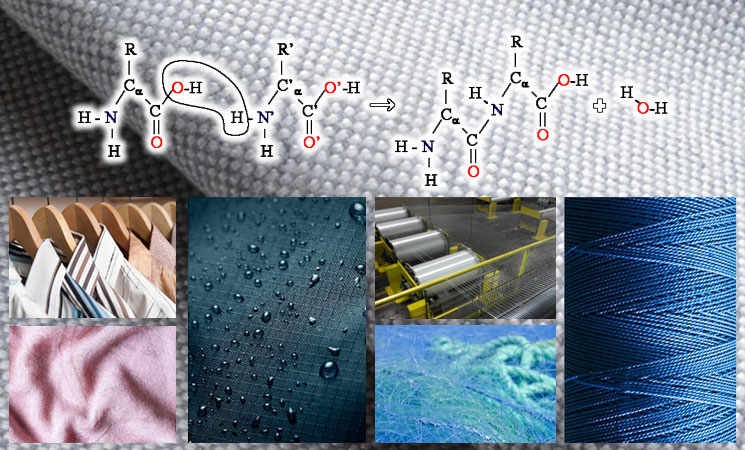Polyamide
Polyamide
Polyamide, commonly known as nylon, is a thermoplastic polymer introduced to the industry in the mid-1930s by DuPont engineers.
Since then, polyamide has been a suitable material in most industries, such as automobile manufacturing, the food industry, sports equipment, the carpet industry, and most importantly, the textile and clothing industry.
Polyamides are usually converted into fibers to be used. If you are willing to get familiar with the types of simple polyamide available in the industry, their characteristics, and their use, this article will help you.
What is polyamide?
Simple polyamide is a polymer that includes amide groups (R-CO-NH-R) as an essential part of the polymer chain. These amide groups keep repeating. A simple polyamide with a high molecular weight is usually called nylon.
Simple polyamide is a crystalline polymer formed from the combination of a diacid and a diamine. In the mixture of these two monomers, the linking of molecules takes place through the formation of amide groups. The most crucial simple polyamide is nylon, which is considered a very flexible material. Today, simple polyamide is produced in the form of thin and long threads.
At first, simple polyamide was used to make parachutes and ropes in World War II, but later in the 40s, it gained its place in the clothing and fabric market. Due to its elasticity, this material achieved great success in the hosiery industry and quickly replaced silk stockings, which were expensive and less flexible.
Today, simple polyamide is used for many sticky clothes, such as women’s socks, pantyhose, swimwear, underwear, and high-quality and comfortable sports clothes.
Types of polyamides
Types of simple polyamide are usually named with a unique number placed in front of the polyamide name, and each one has its unique characteristics. In this section, we will introduce the types of simple polyamide.
1- Polyamide 6.6
This polyamide melts at a very high temperature and is resistant to abrasion. Hence, this polyamide works very well for making various car parts. But polyamide 6.6 also has its disadvantages. For example, it absorbs a lot of water, and its chemical resistance is weak. Since this simple polyamide is strong and has high heat resistance, it can also act as a thermoplastic.
2- Polyamide 6
This type of simple polyamide is somewhat crystalline and is very resistant to erosion. This simple polyamide is also resistant to chemicals such as acids and alkyl. However, the tensile strength of polyamide 6 decreases due to a water absorption of 2.4%.
3- Polyamide 6.10
Another type of simple polyamide is polyamide 6.10, which is resistant to chemicals and acids. This simple polyamide is more robust than almost any other nylon, so much so that it doesn’t break even under a salt like zinc chloride. This class of simple polyamide, which absorbs relatively less water, also shows good resistance in wet environments.
Click on the link below to read more:

Comments
Post a Comment